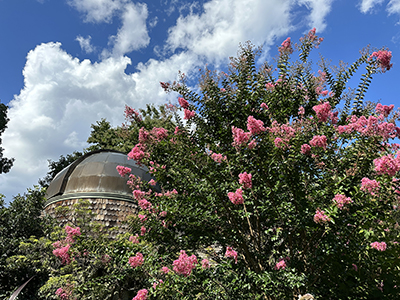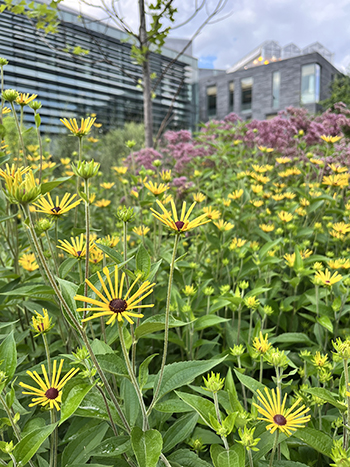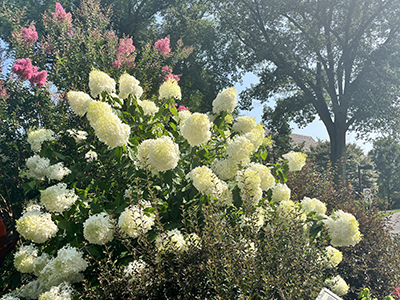
Plants of the Week: July 31
Guest Author: Devin Dawson, 2023 Summer Intern

Lagerstroemia ‘Sioux’ (Crapemyrtle)
As you’ve probably noticed around town or here at the Scott Arboretum, shrubby trees of various reds, pinks, and purples have recently begun blooming: crepe myrtle! The striking hybrid ‘Sioux’ is located in the Terry Shane Teaching Garden. This variety grows hot pink panicle flowers with wrinkled petals (reminiscent of crepe paper) and glossy green foliage. Lagerstroemia blooms last from July until September when its leaves turn burgundy. This deciduous tree-shrub is loved for its long bloom season, but its showy flowers can stain your car or pavement so planting crepe myrtle near walkways should be avoided. Photo credit: R. Robert

Rudbeckia subtomentosa ‘Henry Eilers’ (sweet coneflower)
The common coneflower is one of the most loved and widespread native wildflowers. They’re low maintenance, not usually browsed by deer, not aggressive, and very attractive to pollinators. Clumps of purple coneflower are common to see locally, but the sweet coneflower’s unique flower structure in the John W. Nason Garden in particular caught my attention.
‘Henry Eilers’ blooms have quilled yellow petals that form with spaces between them, emerging from a deep brown cone in the form of a sunburst. Their fuzzy upright stems with toothed green leaves grow 4-5 ft tall. Their blooms last from late summer to early autumn and release a mild sweet aroma of anise, hence its common name. The native Rudbeckia subtomentosa is drought tolerant, low maintenance, and makes for good cut flowers. Photo credit: D. Dawon

Hydrangea paniculata ‘Silver Dollar’ (panicle hydrangea)
Another sensational variety of hydrangea finds itself included in plants of the week. The forest-green mounded shrubs featuring exaggerated creamy white pom-poms are called Hydrangea paniculata ‘Silver Dollar’. Panicle hydrangea has strong stems that hold broadly rounded dense flower clusters. ‘Silver Dollar’ continues blooming from July into the autumn months, first emerging light green, then shifting to a soft white, and slowly turning blush-pink over time. Most of the panicle hydrangea’s attractive flowers are sterile, but the fertile blooms underneath attract pollinators and beneficial insects. This deciduous woody shrub is beloved by gardeners and wildlife alike for its showy, long-lasting blooms. This selection can be found in the Terry Shane Teaching Garden. Photo credit: D. Dawon





No Comments